Idea by
Camilla Piccolo, Elena Parnisari
SAN. Social Architecture Now.
Call for ideas 2018
Do you car or do you care?
Do you car or do you care?
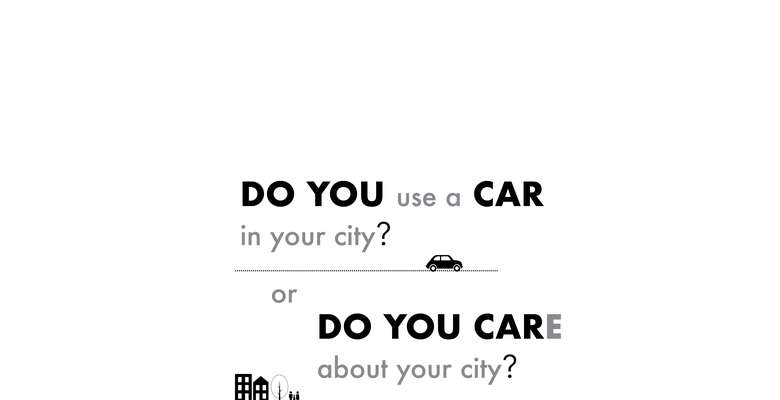
How would you live your city if cars were banned? How would mobility be rethought?
To confront the world’s escalating population and climate issues, we imagine that Milan becomes the world’s first car-less city.
Taking cars out of mobility shapes a new city experience. No driving creates more free time and improves quality of life—all while curbing pollution and stress.
This transforms urban living in an enriching existence.
Transport happens in a layered vertical network (underground system), while the surface level becomes recreational space for people and landscape. Transport too becomes a place for learning, entertainment and socializing: tube coaches host exhibitions, courses, etc.
The media will be key to shape our understanding of the new sustainable city.
Our planet risks collapse; our cities have become a place of stress and dehumanization. More needs to be done—but is this the first step to solve both?
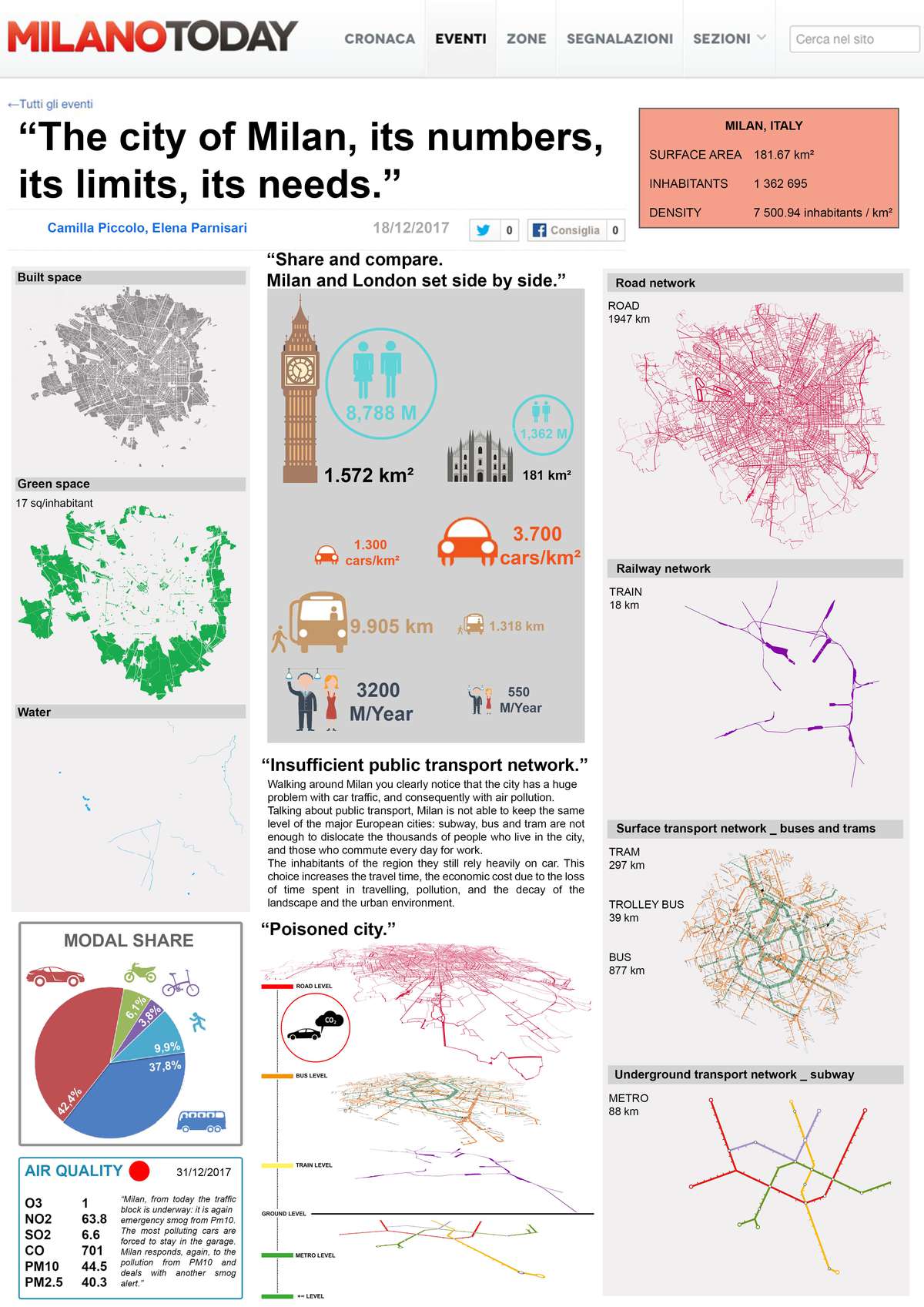
Geographical and orographical analysis of the city of Milan, focusing on the different urban transport systems.
Current air quality and different transport systems.
Comparison with the city of London to highlight the lack of public transport network in Milan.
Milan is experiencing record-high levels of pollution and traffic. This stifles quality of life, and exacerbates its issues.

Breaking news: high level of risk for the inhabitants due to air quality, traffic jam, pollution, population growth and the consequently disappearance of cars in Milan.
The city adapts to the new transport system.
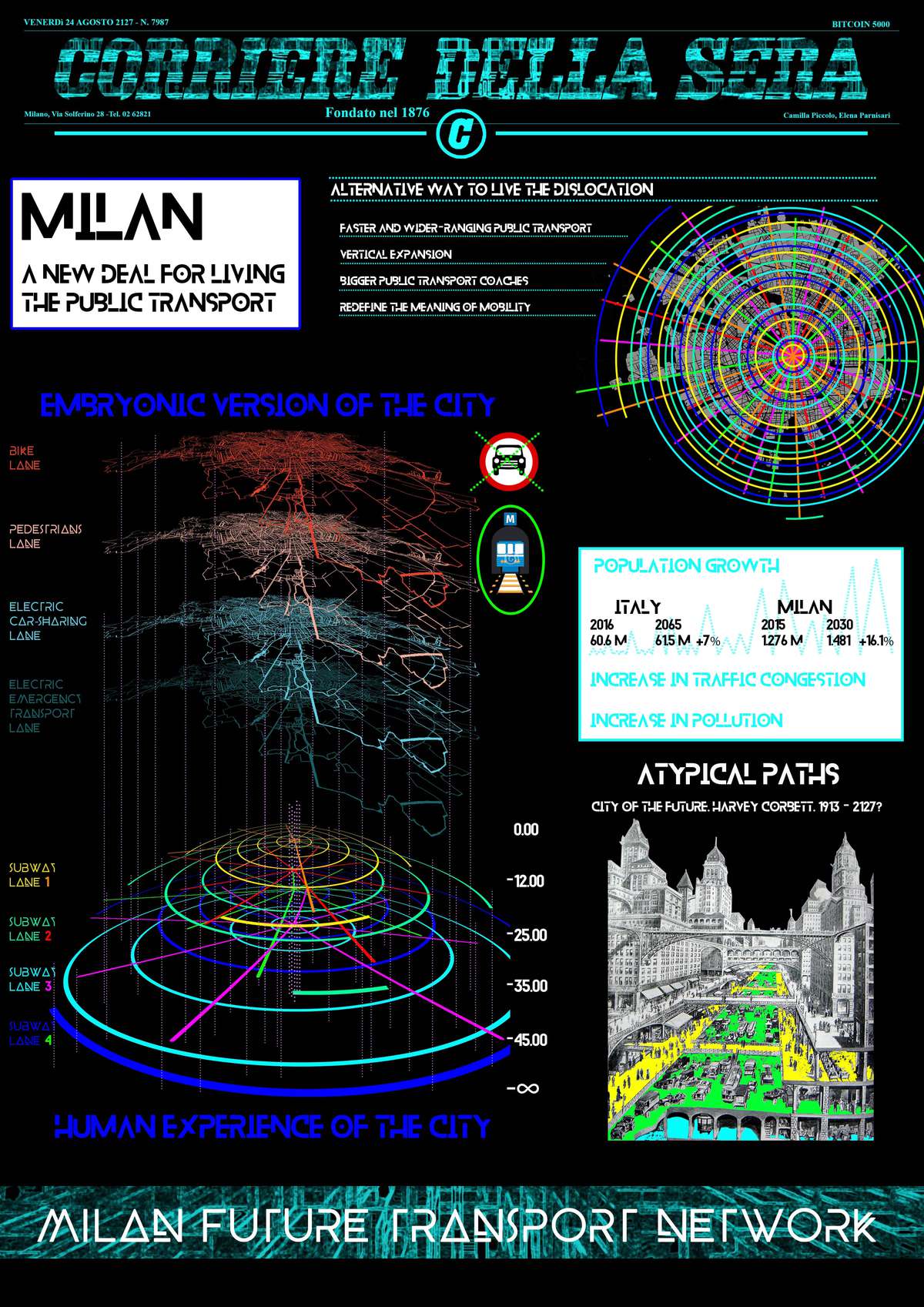
Vision of a future architecture with a vertical development of transport network using the subsoil: enhancement of public transport and decreasing the pollution level.
The surface level is converted in slow and sharing mobility. There are provisions for a fast-emergency lane.
The underground transport system is built with overlapping layers. It uses green energy technology.
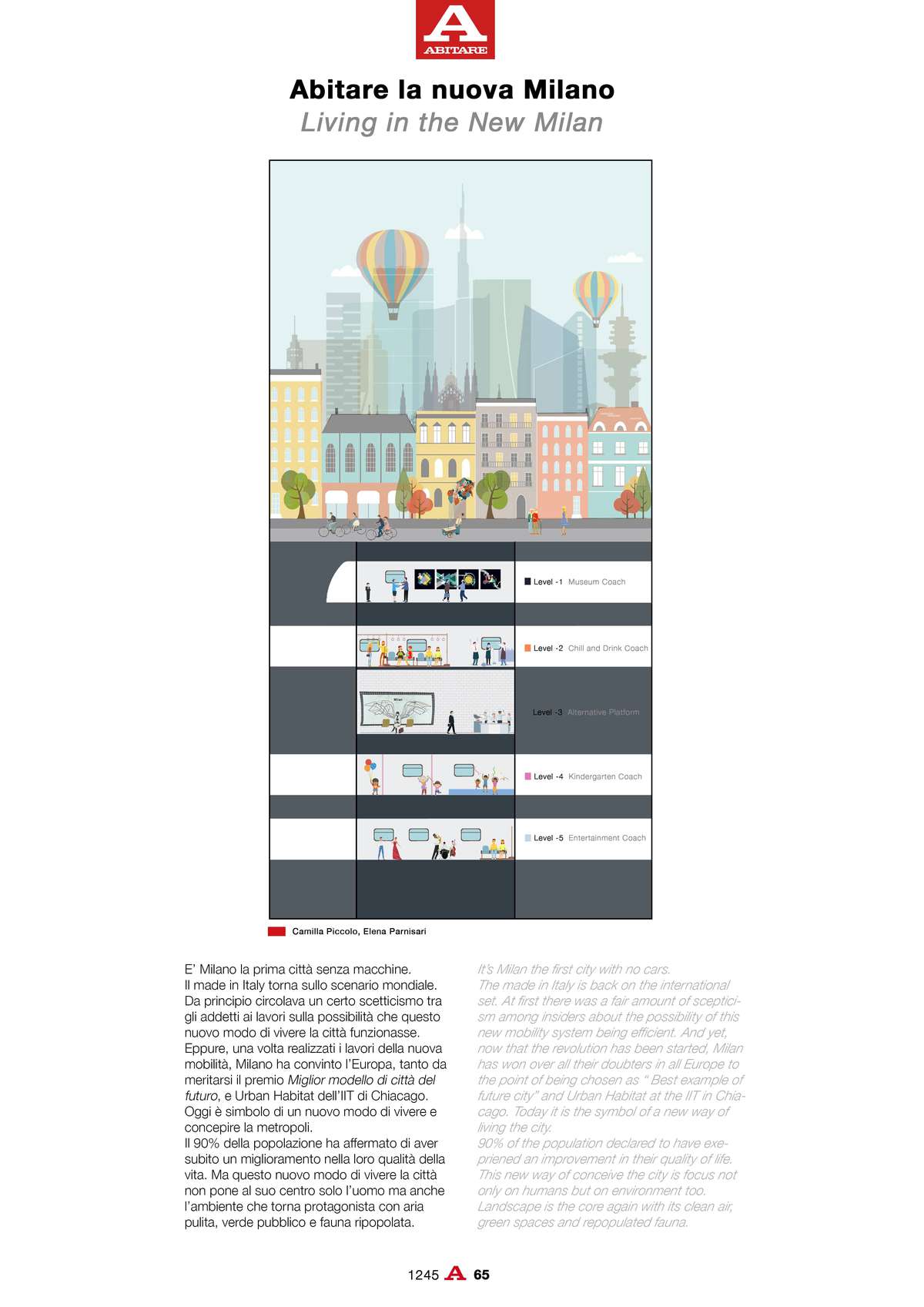
The new human experience of living the city.
Mobility has a new meaning: transport becomes an occasion to learn, play, relax, be entertainment, taste, socialize.
The non-place becomes an organic, human place that redefines the old concept of public transport, where wasted time acquires social functions.
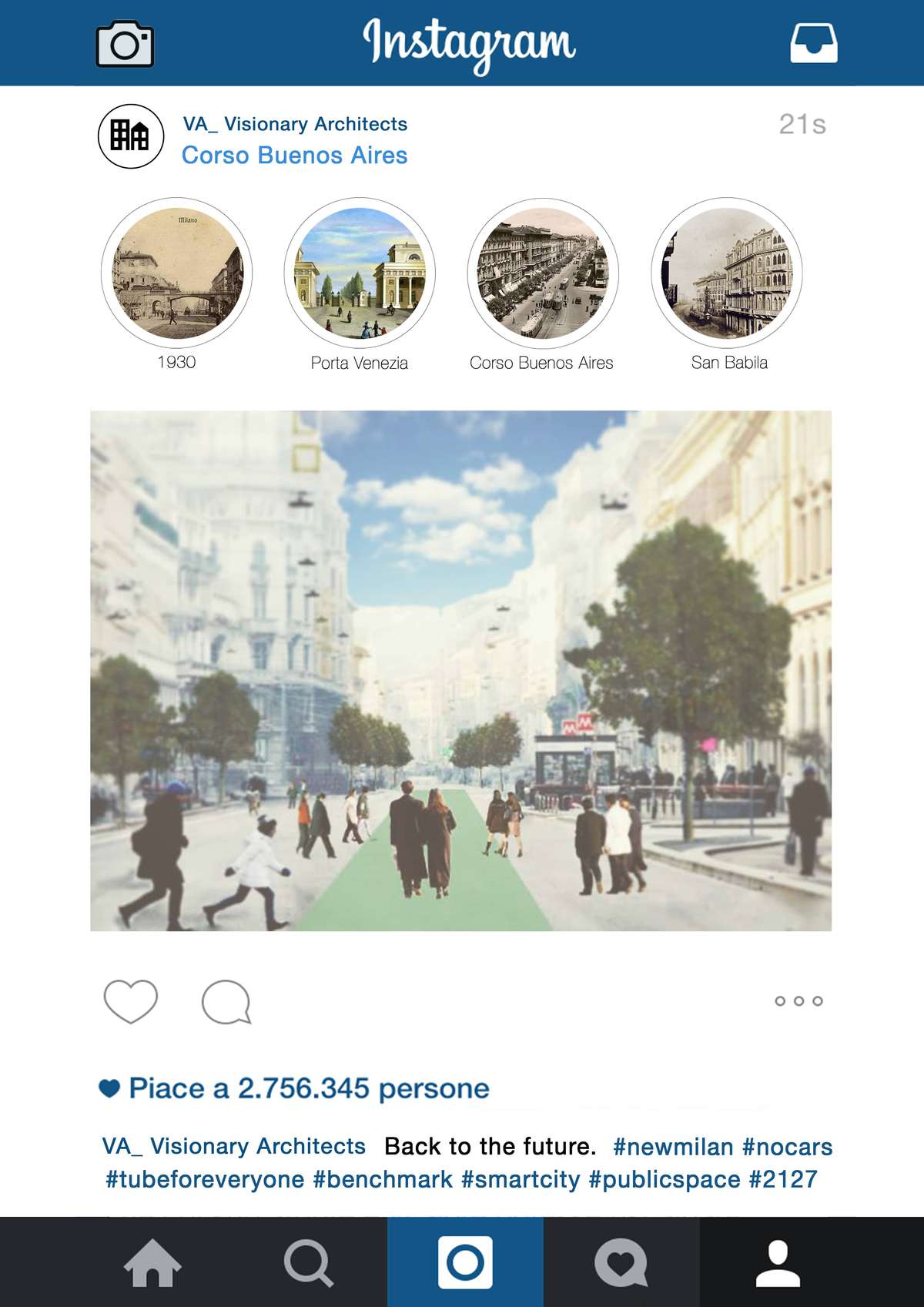
A picture of the future public space in a city without cars.
A new Milan, where the underground is used to commute and the surface level to enjoy the new public spaces less crowded, chaotic and polluted.
A benchmark for a futuristic city where architecture is made for the inhabitants.
Do you car or do you care?
Do you car or do you care?

How would you live your city if cars were banned? How would mobility be rethought?
To confront the world’s escalating population and climate issues, we imagine that Milan becomes the world’s first car-less city.
Taking cars out of mobility shapes a new city experience. No driving creates more free time and improves quality of life—all while curbing pollution and stress.
This transforms urban living in an enriching existence.
Transport happens in a layered vertical network (underground system), while the surface level becomes recreational space for people and landscape. Transport too becomes a place for learning, entertainment and socializing: tube coaches host exhibitions, courses, etc.
The media will be key to shape our understanding of the new sustainable city.
Our planet risks collapse; our cities have become a place of stress and dehumanization. More needs to be done—but is this the first step to solve both?
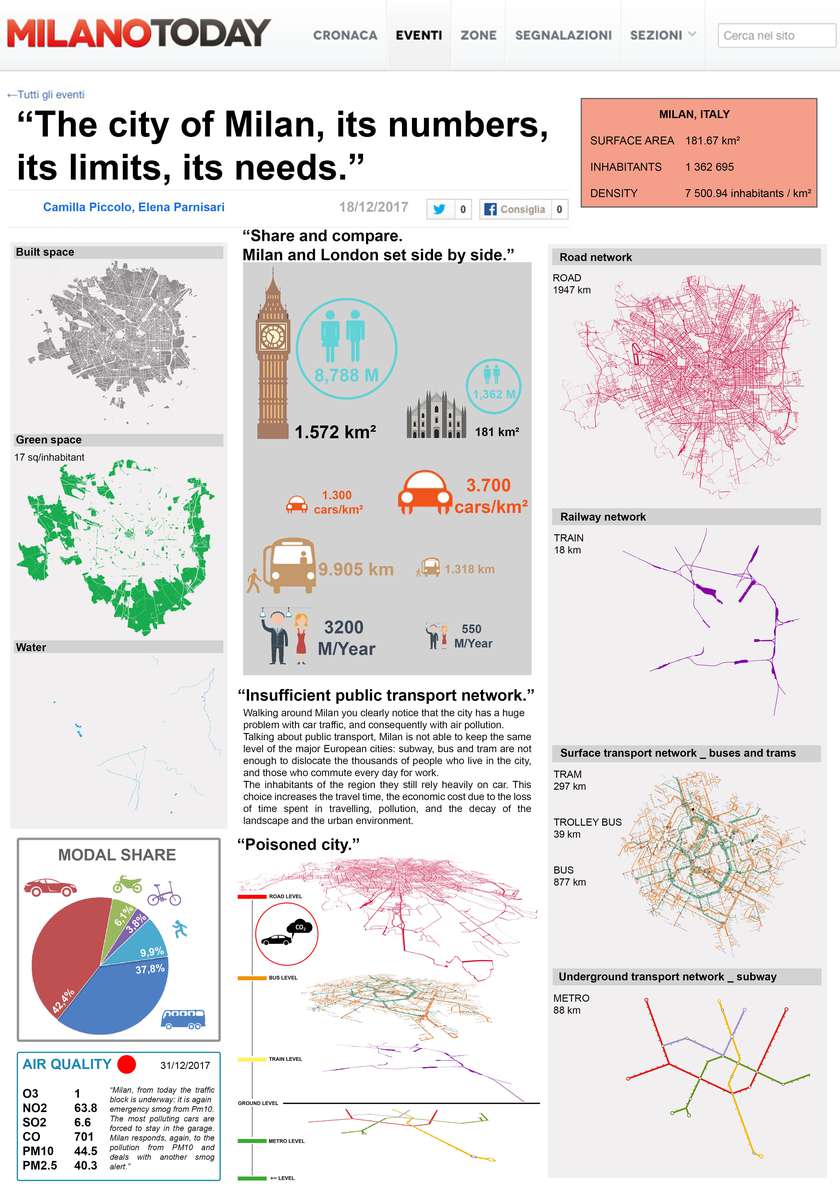
Geographical and orographical analysis of the city of Milan, focusing on the different urban transport systems.
Current air quality and different transport systems.
Comparison with the city of London to highlight the lack of public transport network in Milan.
Milan is experiencing record-high levels of pollution and traffic. This stifles quality of life, and exacerbates its issues.

Breaking news: high level of risk for the inhabitants due to air quality, traffic jam, pollution, population growth and the consequently disappearance of cars in Milan.
The city adapts to the new transport system.
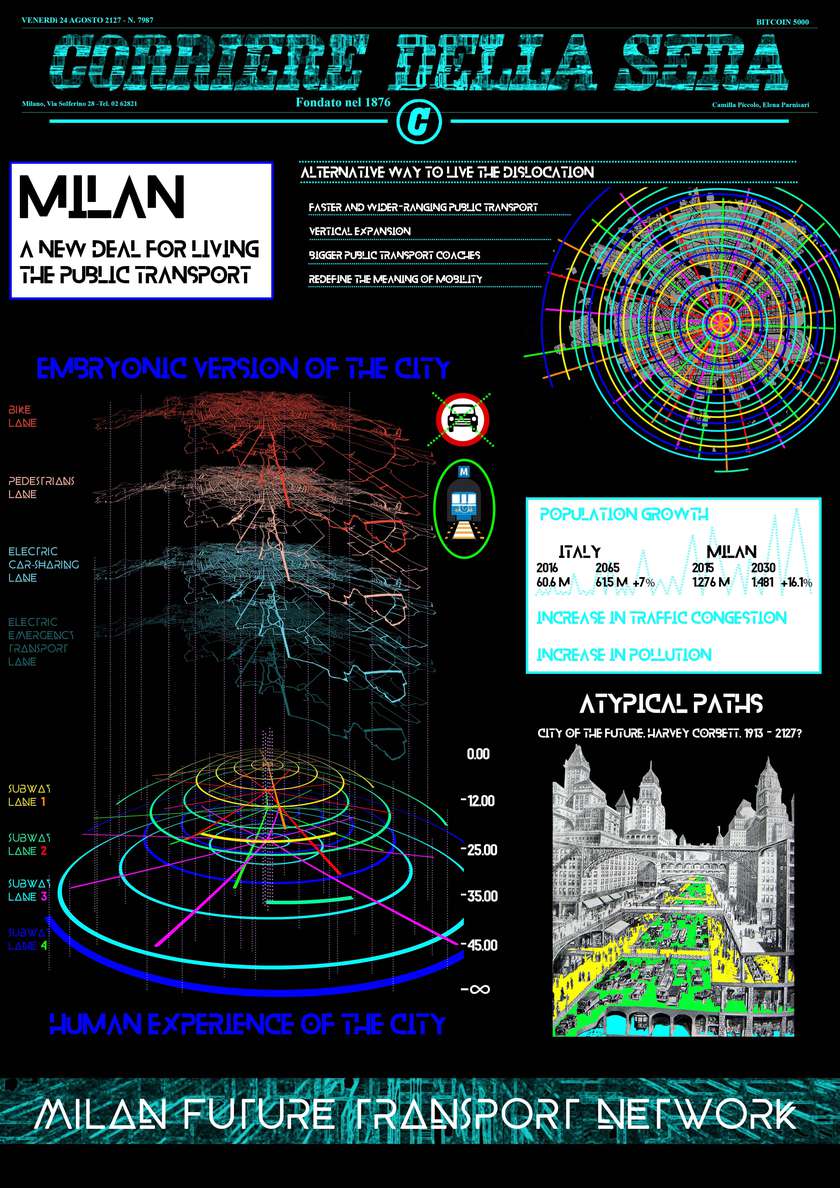
Vision of a future architecture with a vertical development of transport network using the subsoil: enhancement of public transport and decreasing the pollution level.
The surface level is converted in slow and sharing mobility. There are provisions for a fast-emergency lane.
The underground transport system is built with overlapping layers. It uses green energy technology.

The new human experience of living the city.
Mobility has a new meaning: transport becomes an occasion to learn, play, relax, be entertainment, taste, socialize.
The non-place becomes an organic, human place that redefines the old concept of public transport, where wasted time acquires social functions.
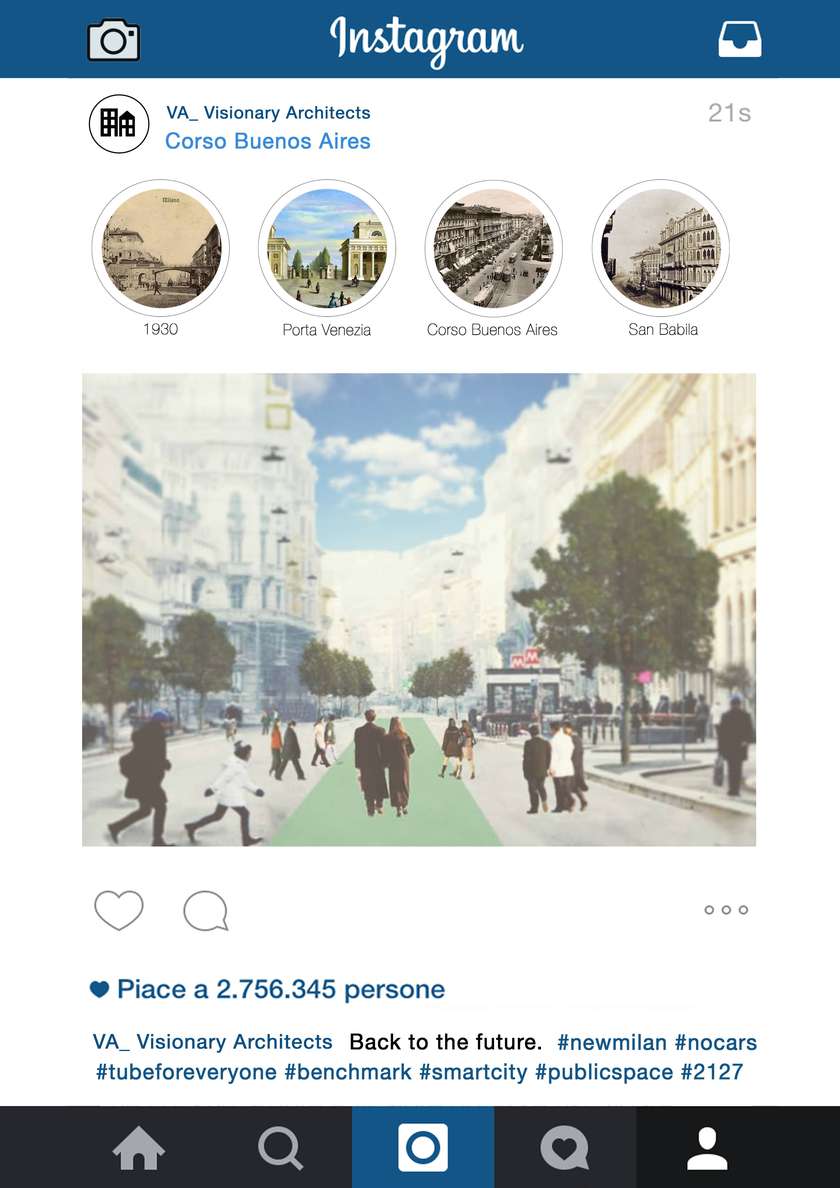
A picture of the future public space in a city without cars.
A new Milan, where the underground is used to commute and the surface level to enjoy the new public spaces less crowded, chaotic and polluted.
A benchmark for a futuristic city where architecture is made for the inhabitants.